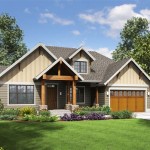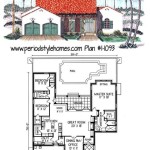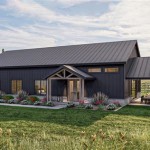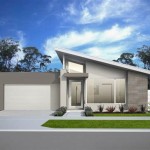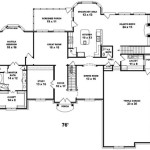Small Home Plans: Maximizing Comfort in 1000 Square Feet
The demand for smaller, more efficient homes is steadily increasing. Several factors contribute to this trend, including rising construction costs, a desire for simpler lifestyles, and a growing awareness of environmental impact. Among the various size options, 1000 square feet represents a sweet spot for many potential homeowners, offering a balance between affordability and comfortable living space. This article explores the intricacies of small home plans specifically designed for 1000 square feet, examining key considerations, design strategies, and potential layouts.
A well-designed 1000-square-foot home can feel surprisingly spacious. Successful planning hinges on efficient use of space, strategic design choices, and careful consideration of individual needs and lifestyle. Before embarking on the design process, it is crucial to define priorities and understand the specific requirements of the occupants.
Key Considerations Before Designing a 1000 Square Foot Home
Before even considering specific floor plans, several critical factors should be addressed. These considerations directly influence the design choices and ensure the final product meets the owner's needs.
First, the
number of occupants
is of paramount importance. A single person or a couple will have vastly different space requirements than a family with children. The number of bedrooms and bathrooms will directly correlate with the number of residents. Furthermore, consider potential future needs. Will the family grow? Will elderly parents eventually move in? Planning for flexibility is essential.Second,
lifestyle
plays a crucial role. Does the owner work from home and require a dedicated office space? Are they avid cooks who need a large, well-equipped kitchen? Or are they more focused on outdoor living and require a spacious deck or patio? Identifying these lifestyle needs is crucial for tailoring the floor plan to prioritize the most important spaces.Third,
budget constraints
are a significant determinant. The desired level of finishes, the complexity of the design, and the chosen building materials will all significantly impact the overall cost. A realistic assessment of the budget will guide decisions regarding features and amenities, ensuring the project remains financially feasible.Fourth,
local building codes and regulations
must be thoroughly researched and adhered to. These regulations can dictate minimum room sizes, setback requirements, and energy efficiency standards. Failure to comply with these regulations can result in costly delays or even prevent the project from proceeding altogether.Finally,
lot characteristics
will greatly influence the design. The size and shape of the lot, the orientation (sun exposure), the slope, and any existing trees or landscaping will all need to be considered. A narrow lot, for example, may necessitate a two-story design to maximize square footage, while a sloped lot may present unique opportunities for a walk-out basement.Effective Design Strategies for Maximizing Space
Once the initial considerations are addressed, specific design strategies can be employed to optimize the use of space within the 1000-square-foot footprint. These strategies focus on creating a sense of openness, maximizing natural light, and minimizing wasted space.
One crucial strategy is the
open floor plan
. This design approach combines the living room, dining room, and kitchen into a single, flowing space. By eliminating walls between these areas, the home feels larger and more connected. This layout also promotes better natural light distribution throughout the space. Careful consideration should be given to furniture placement and zoning to define different areas within the open plan.Vertical space utilization
is another effective technique. High ceilings can create a sense of spaciousness and allow for taller windows, which bring in more natural light. Lofts can be incorporated to provide additional living or storage space, without significantly increasing the overall footprint. Built-in shelving and storage units can utilize vertical space to maximize organization and minimize clutter.Strategic use of
natural light
is essential. Large windows and skylights can brighten interior spaces and make them feel more open and airy. Proper window placement can also harness passive solar energy for heating in the winter and reduce the need for artificial lighting during the day. Light-colored walls and ceilings can further amplify the effect of natural light.Multi-functional spaces
are particularly important in small homes. A guest bedroom can double as a home office, or a dining table can serve as a workspace. Furniture that can be easily converted from one function to another, such as a sofa bed or a folding desk, can be invaluable.Ingenious
storage solutions
are paramount. Built-in storage, under-bed storage, and vertical shelving can help to minimize clutter and keep the home organized. Utilizing every nook and cranny for storage is crucial in a small space. Consider incorporating storage into unexpected places, such as under stairs or within window seats.Minimalism
becomes a design philosophy when dealing with smaller spaces. Reducing the amount of furniture and possessions is key to creating a sense of spaciousness and avoiding a cluttered feel. Choosing furniture with clean lines and a simple design can also contribute to a more streamlined aesthetic.Examples of 1000 Square Foot Home Layouts
The specific layout of a 1000-square-foot home will depend on the individual needs and preferences of the occupants, as well as the specific characteristics of the building site. However, some common layouts can serve as a starting point for the design process.
A
two-bedroom, one-bathroom layout
is a popular option for small families or couples who occasionally host guests. This layout typically features an open living area, a kitchen with a breakfast bar, and two bedrooms, one of which may be smaller and suitable for use as a guest room or home office. The bathroom is typically centrally located for easy access from both bedrooms and the living area.A
one-bedroom, one-bathroom layout with a den
is ideal for singles or couples who require a dedicated workspace. This layout often features a larger master bedroom, a spacious open living area, and a separate den that can be used as a home office, library, or guest room. The bathroom is typically accessible from both the bedroom and the living area.A
three-bedroom, one-bathroom layout
is often chosen by families with young children. This layout typically features smaller bedrooms and a more compact living area. Maximizing storage space and utilizing multi-functional furniture is particularly important in this type of layout.A
single-story ranch-style layout
is a common choice for homeowners looking for accessibility and ease of maintenance. This layout typically features an open living area, a kitchen with a dining area, and two or three bedrooms. Large windows and a spacious deck or patio are often incorporated to maximize natural light and outdoor living space.A
two-story layout
is a practical option for maximizing square footage on a smaller lot. This layout typically features the living areas on the ground floor and the bedrooms on the upper floor. A staircase connects the two levels, and careful consideration should be given to the placement of windows and skylights to ensure adequate natural light throughout the home.Regardless of the specific layout, it is essential to create a well-defined entry area, even if it is small. This helps to create a sense of separation between the interior and exterior and provides a place to remove shoes and coats. Thoughtful placement of doors and windows is also crucial to ensure privacy and optimize natural light and ventilation.
The kitchen design deserves special attention. Given the limited space, it's vital to optimize counter space, storage, and workflow. Consider incorporating features such as pull-out drawers, spice racks, and a kitchen island that can double as a breakfast bar. Choose appliances that are appropriately sized for the space, and consider energy-efficient options to minimize utility bills.
Bathroom design should also prioritize efficiency and functionality. Consider using a shower instead of a tub to save space, and opt for a wall-mounted sink to free up floor space. Ample storage is essential, and mirrored cabinets can help to create a sense of spaciousness.
Ultimately, designing a successful 1000-square-foot home requires a thoughtful and strategic approach. By considering the key factors outlined above and employing effective design strategies, it is possible to create a comfortable, functional, and stylish living space that meets the needs of the occupants without sacrificing aesthetics or affordability.

7 Ideal Small Houses Floor Plans Under 1000 Square Feet House Cottage

House Plans Under 1000 Sq Ft 2 Bedrooms Bathroom Granny Flat And Usa Concept Small

Small House Plan 1000 Sq Foot 94 2 Meters Bedroom Gflh Home Granny Flat Concept Plans For

10 Modern Under 1000 Square Feet House Plans Craft Mart

House Plans Under 1000 Square Feet
Small Country Ranch Plan 2 Bedrm Bath 1000 Sq Ft 141 1230

Cottage Style House Plan 2 Beds Baths 1000 Sq Ft 21 168 Small Floor Plans Lake Country
House Plan Of The Week 2 Beds Baths Under 1 000 Square Feet Builder

Our Top 1 000 Sq Ft House Plans Houseplans Blog Com

Small House Plans Under 1000 Sq Ft 10 Book Diy

